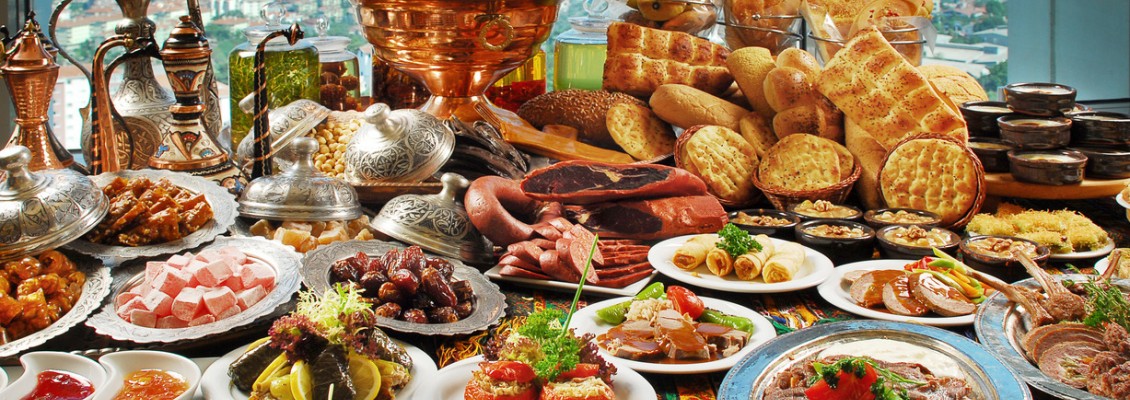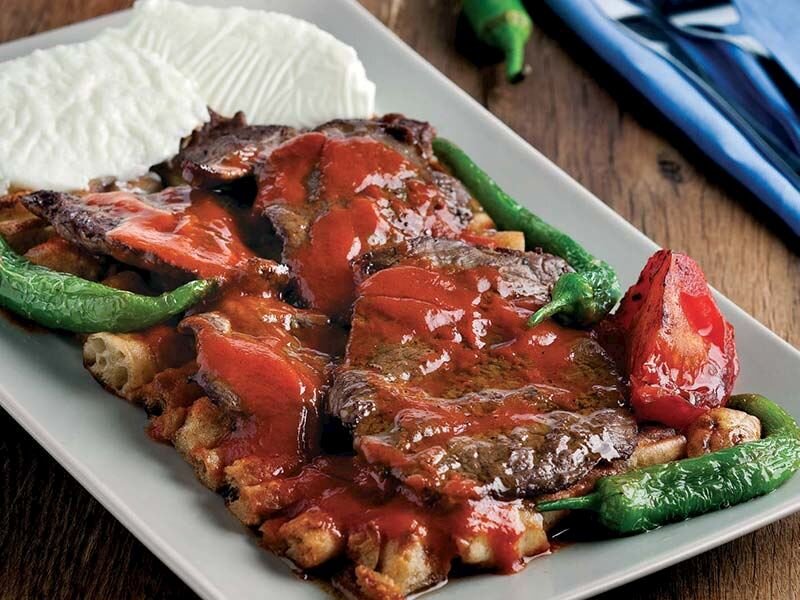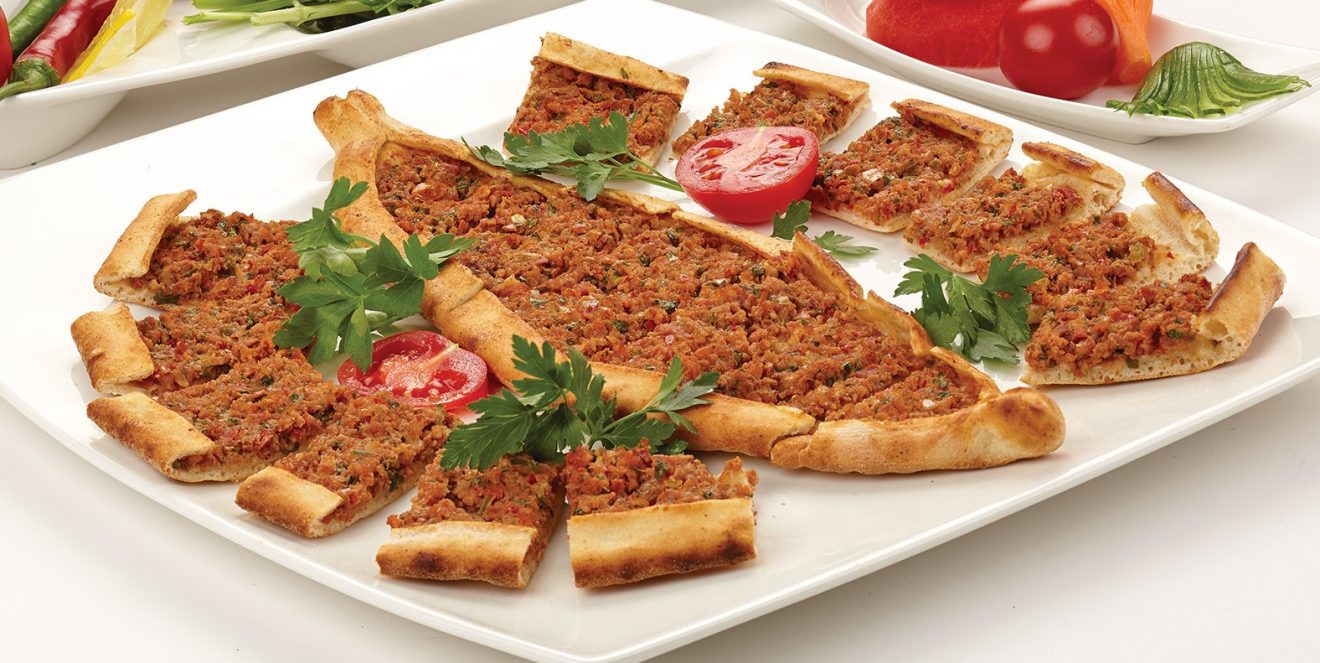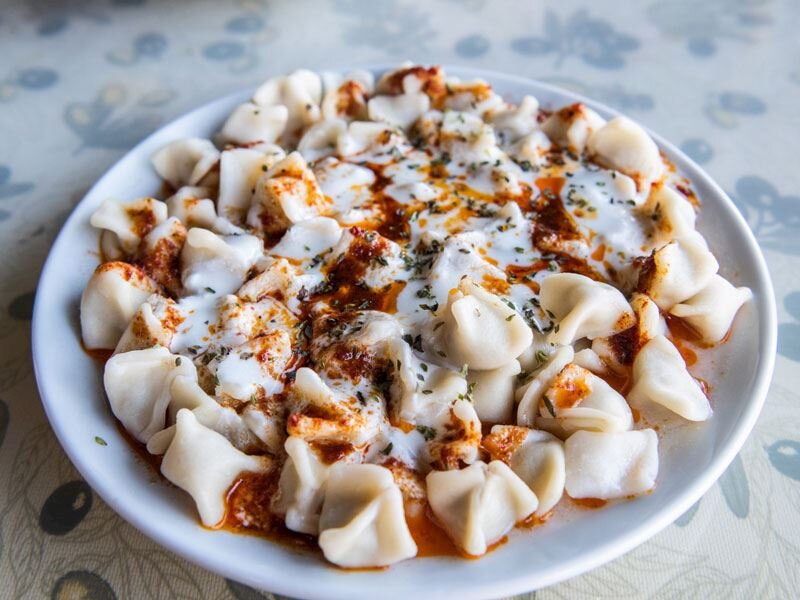
FOODS YOU SHOULD TRY IN ISTANBUL
Breakfast
Turkish breakfast culture involves sampling from an extensive array of different flavours. This includes both salty food—like cheese of different kinds, and olives—and sweet food like honey and jam. Fresh cucumbers, tomatoes and greens are also considered a must. As well as all this, we love cooking light dishes for breakfast, like menemen (Turkish scrambled eggs with tomato) and fried egg with sucuk (Turkish pepperoni). Many people consider Turkish breakfast culture to be similar to brunch. Make sure that you have a proper Turkish breakfast once you visit the country!
İskender
İskender is a kebab dish of exquisite harmony; each ingredient perfectly complements the others. The main element is the tender meat, sliced wafer-thin. Beneath this lies pieces of pide bread, smothered with tomato sauce on top. It’s served with thick creamy yoghurt, which adds a touch of lightness and a delicate tang. The final touch is the melted butter poured over the meat, gleaming both literally and figuratively.

Adana Kebab
This is what most locals think of when someone mentions kebabs. Named after the city of Adana, this kebab is traditionally made from ground lamb meat and tail fat with a generous amount of spice (hot pepper flakes in particular), and barbecued on wide skewers. The kebab is served with pide bread, and paired with slices of grilled tomato and large green chillies. No Adana kebab is complete without onion salad with sumac, and finely chopped tomato salad. Adana Kebab is available as a dish to be savoured at the table, as well as as a wrap (known as dürüm) when you have to devour it immediately.

Şiş kebab
Turkey takes kebabs seriously, and there are plenty of varieties. Chicken also has a part to play on the Turkish kebab stage. Chunks of chicken are lovingly marinated before getting barbecued. Chicken Şiş (pronounced “shish”) is typically served in a fashion similar to Adana kebab, with pide bread and chargrilled vegetables or in a dürüm wrap, and is a particularly succulent and juicy way to enjoy chicken.
Döner
Another type of globally renowned Turkish kebab! In the unlikely event that you have never heard of it, döner is made by stacking slices of chicken or meat on a gigantic vertical skewer to form an enormous lump of meat that rotates in front of a grill. This cooking style may be slow but it produces mouthwatering results. Once cooked, the tender meat is sliced with a large knife into delectable slivers. These delicate slices are typically served in a wrap or in a pita bread pocket.
Pide
Pide is a type of flat Turkish bread, as well as a dish made with toppings on the bread. The latter is quite similar to pizza, but it is boat-shaped instead of round, and doesn’t always include cheese; some varieties are suitable for vegans too. Topping options include sucuk, minced or diced meat, potato, kaşar cheese and feta cheese

Kuru Fasulye
British people are not the only ones who are into beans! Haricot beans are a big deal in Turkey, both for home-cooked meals and at restaurants. Although it might sound simple, the way we prepare beans is far from boring. Tomato paste, butter and hot pepper work astonishingly well with creamy locally-grown beans. This dish is widely available everywhere, but if you are around Süleymaniye Mosque, we recommend you try their legendary Kuru Fasulye.
Börek
Turkey is paradise for pastry lovers, and you can’t beat a good börek! Börek typically consists of paper-thin layers of dough, brushed with butter and filled with cheese, ground meat, spinach or potatoes. Ideally the texture is delicate and flaky, like puff pastry. Local Turkish people eat it at home for breakfast in particular, but it is possible to find it at any time of the day or night in patisseries and dedicated börek shops.
Mantı
Turkish people’s love for dough naturally includes dumplings, although they prefer them in a smaller size than you might be used to. Known as mantı, they are typically filled with a mixture of minced meat, onion, paprika and parsley. As you may have realised by now, people in this country prefer yoghurt as an accompaniment for a huge number of dishes, and mantı is no exception. It is usually served with lashings of garlic yoghurt. The finishing touch is a drizzle of melted butter with mint and chilli or sumac - the culinary equivalent of poetry.

Lahmacun
Last on our list but definitely not least: Lahmacun. Although it is often referred to as Turkish pizza, the food deserves to be known by its own name, as it is an authentic dish in its own right. Lahmacun uses thinly rolled dough for the finest base imaginable, topped with a distinctive blend of ground beef or lamb, minced tomato, bell pepper, onion, garlic, parsley, hot chili and sometimes isot - a type of chili native to the city of Urfa.

Leave a Comment